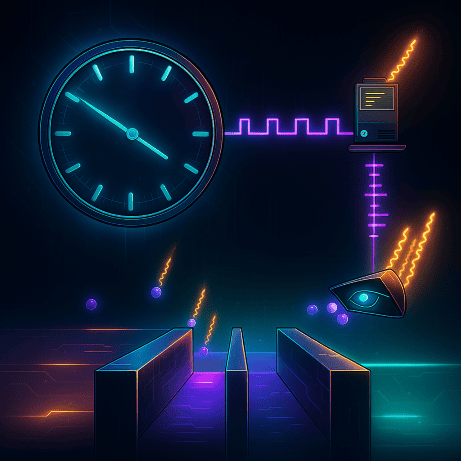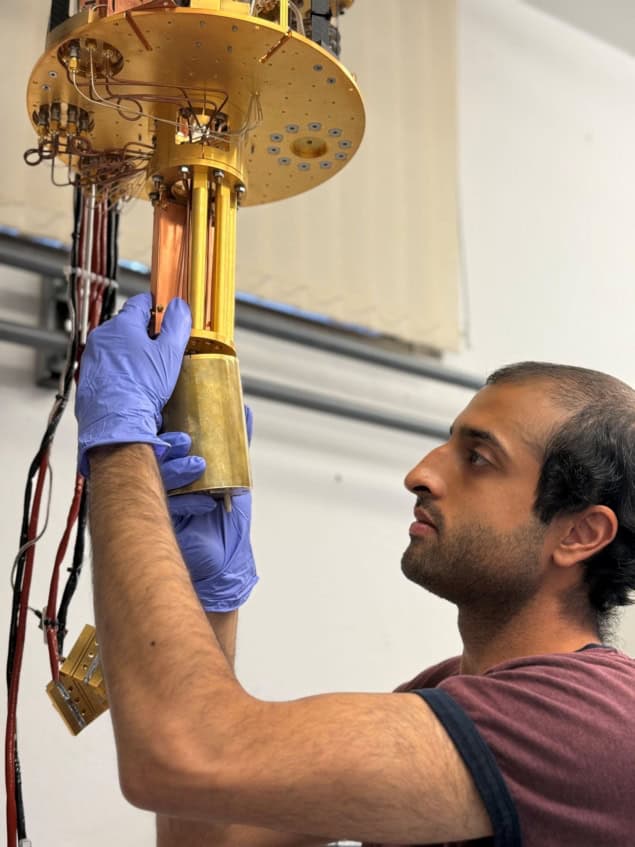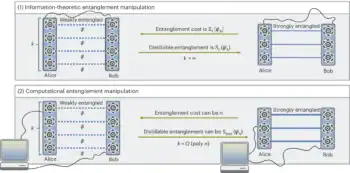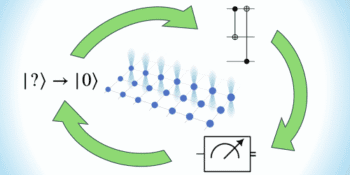
Classical clocks have to obey the second law of thermodynamics: the higher their precision, the more entropy they produce. For a while, it seemed like quantum clocks might beat this system, at least in theory. This is because although quantum fluctuations produce no entropy, if you can count those fluctuations as clock “ticks”, you can make a clock with nonzero precision. Now, however, a collaboration of researchers across Europe has pinned down where the entropy-precision trade-off balances out: it’s in the measurement process. As project leader Natalia Ares observes, “There’s no such thing as a free lunch.”
The clock the team used to demonstrate this principle consists of a pair of quantum dots coupled by a thin tunnelling barrier. In this double quantum dot system, a “tick” occurs whenever an electron tunnels from one side of the system to the other, through both dots. Applying a bias voltage gives ticks a preferred direction.
This might not seem like the most obvious kind of clock. Indeed, as an actual timekeeping device, collaboration member Florian Meier describes it as “quite bad”. However, Ares points out that although the tunnelling process is random (stochastic), the period between ticks does have a mean and a standard deviation. Hence, given enough ticks, the number of ticks recorded will tell you something about how much time has passed.
In any case, Meier adds, they were not setting out to build the most accurate clock. Instead, they wanted to build a playground to explore basic principles of energy dissipation and clock precision, and for that, it works really well. “The really cool thing I like about what they did was that with that particular setup, you can really pinpoint the entropy dissipation of the measurement somehow in this quantum dot,” says Meier, a PhD student at the Technical University in Vienna, Austria. “I think that’s really unique in the field.”
Calculating the entropy
To measure the entropy of each quantum tick, the researchers measured the voltage drop (and associated heat dissipation) for each electron tunnelling through the double quantum dot. Vivek Wadhia, a DPhil student in Ares’s lab at the University of Oxford, UK who performed many of the measurements, points out that this single unit of charge does not equate to very much entropy. However, measuring the entropy of the tunnelling electron was not the full story.

Because the ticks of the quantum clock were, in effect, continuously monitored by the environment, the coherence time for each quantum tunnelling event was very short. However, because the time on this clock could not be observed directly by humans – unlike, say, the hands of a mechanical clock – the researchers needed another way to measure and record each tick.
For this, they turned to the electronics they were using in the lab and compared the power in versus the power out on a macroscopic scale. “That’s the cost of our measurement, right?” says Wadhia, adding that this cost includes both the measuring and recording of each tick. He stresses that they were not trying to find the most thermodynamically efficient measurement technique: “The idea was to understand how the readout compares to the clockwork.”
This classical entropy associated with measuring and recording each tick turns out to be nine orders of magnitude larger than the quantum entropy of a tick – more than enough for the system to operate as a clock with some level of precision. “The interesting thing is that such simple systems sometimes reveal how you can maybe improve precision at a very low cost thermodynamically,” Meier says.

How to keep the second law of thermodynamics from limiting clock precision
As a next step, Ares plans to explore different arrangements of quantum dots, using Meier’s previous theoretical work to improve the clock’s precision. “We know that, for example, clocks in nature are not that energy intensive,” Ares tells Physics World. “So clearly, for biology, it is possible to run a lot of processes with stochastic clocks.”
The research is reported in Physical Review Letters.



